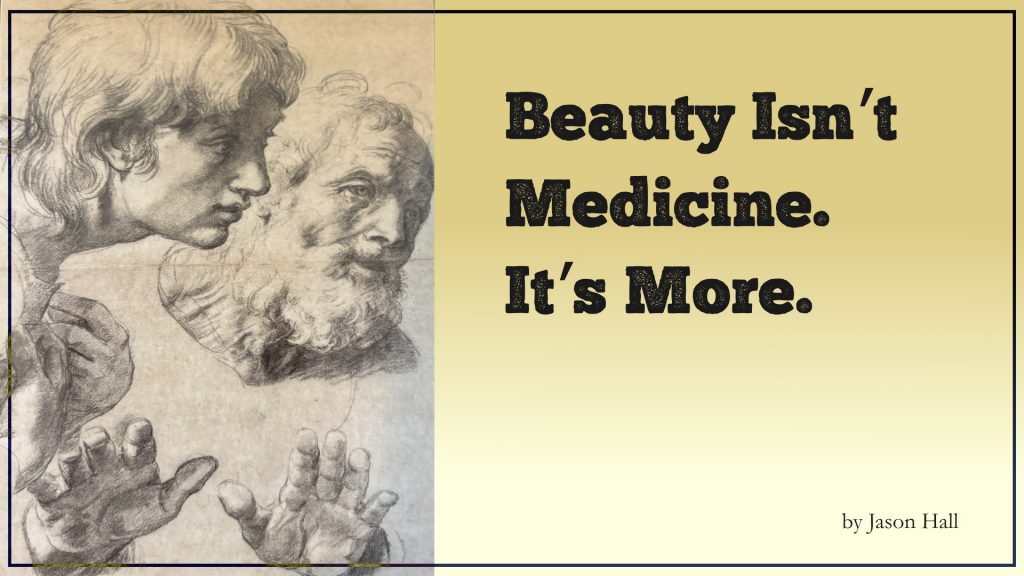
I recently read about a growing movement in mental health circles where doctors write prescriptions not for pills, but for the arts. In this case, the Swiss town of Neuchâtel has launched a new pilot project that enables doctors to send patients on free outings to museums and botanical gardens.
I’m certain that curators of those institutions breathed a sigh of relief to see the extra traffic at their turnstiles. Imagine such a programme extending to concert halls and opera houses, where mental health patients could be counted upon to replace the current aging generation of subscription holders. What a boon if the good doctors saw fit to prescribe a little Mahler or a course of Donizetti. “I’m taking you off of Ozempic and putting you on Opera. You need an injection of Lucia di Lammermoor.”
Paying this sort of attention to the arts seems laudable on first glance, although prescribing a visit to a museum as a cure for your malady still raises a deeper question. What is it in art that is helping people with their mental health? The World Health Organisation thinks it has the answer. Its Health Evidence Network Synthesis report daringly posits, “What is the evidence on the role of the arts in improving health and well-being?” Drawing on over 3,000 studies, the report found “a major role for the arts in the prevention of ill health, promotion of health, and management and treatment of illness across the lifespan.”
The English philosopher Roger Scruton, on the other hand, challenged our notion that art needs to provide a utilitarian function to have value. He believed that art’s role is to present beauty, which he regarded as an ultimate value, alongside truth and goodness. As an “ultimate value”, his view was that beauty is “something that we pursue for its own sake, and for the pursuit of which no further reason need be given.”
This brings us to Fyodor Dostoevsky whose “Beauty will save the world” has frustrated generations of thinkers and ideologues. This enigmatic maxim, however, does capture the complexity of where art rightly belongs. Alexander Solzhenitsyn, the Nobel Prize-winning writer credited with exposing the moral collapse of the Soviet regime,saw these words as a rebuke to the everyday materialistic world we normally inhabit. For him “…a work of art bears within itself its own verification”, adding, “those works of art which have scooped up the truth and presented it to us as a living force—they take hold of us, compel us, and nobody ever, not even in ages to come, will appear to refute them.”
I remember years ago on one of my cross-continental drives, this one taking a southerly route through South Dakota rather than the lengthy all-Canadian route north of Superior, I stopped in the Badlands at sunset and was transfixed by the unexpected beauty of those rugged buttes. Then it hit me: I could only perceive them as beautiful because there was beauty inside of me to recognise it.
Years later, while visiting the treasure-laden Albertina Museum in Vienna, a simple sketch by Raphael stopped me in my tracks. It was but a modest study—a moment in a near-forgotten notebook—an old man and a youth, their figures superimposed. The old man’s hands reached out to me with perfect foreshortening while his eyes broke the fourth wall imploring me across five hundred years. All I could do was look back and weep. I was overtaken, just as I had been those many years before beholding the artless majesty of those South Dakota hills.
Whether in nature or in art, when we draw near to beauty, something ineffable happens—something beyond words. If it heals us, perhaps it’s not because it does anything, but because it reminds us that the beauty we perceive outside ourselves is a reflection of the beauty within.
Art needs no explanation, nor justification.
It just is.
—Jason Hall ©2025